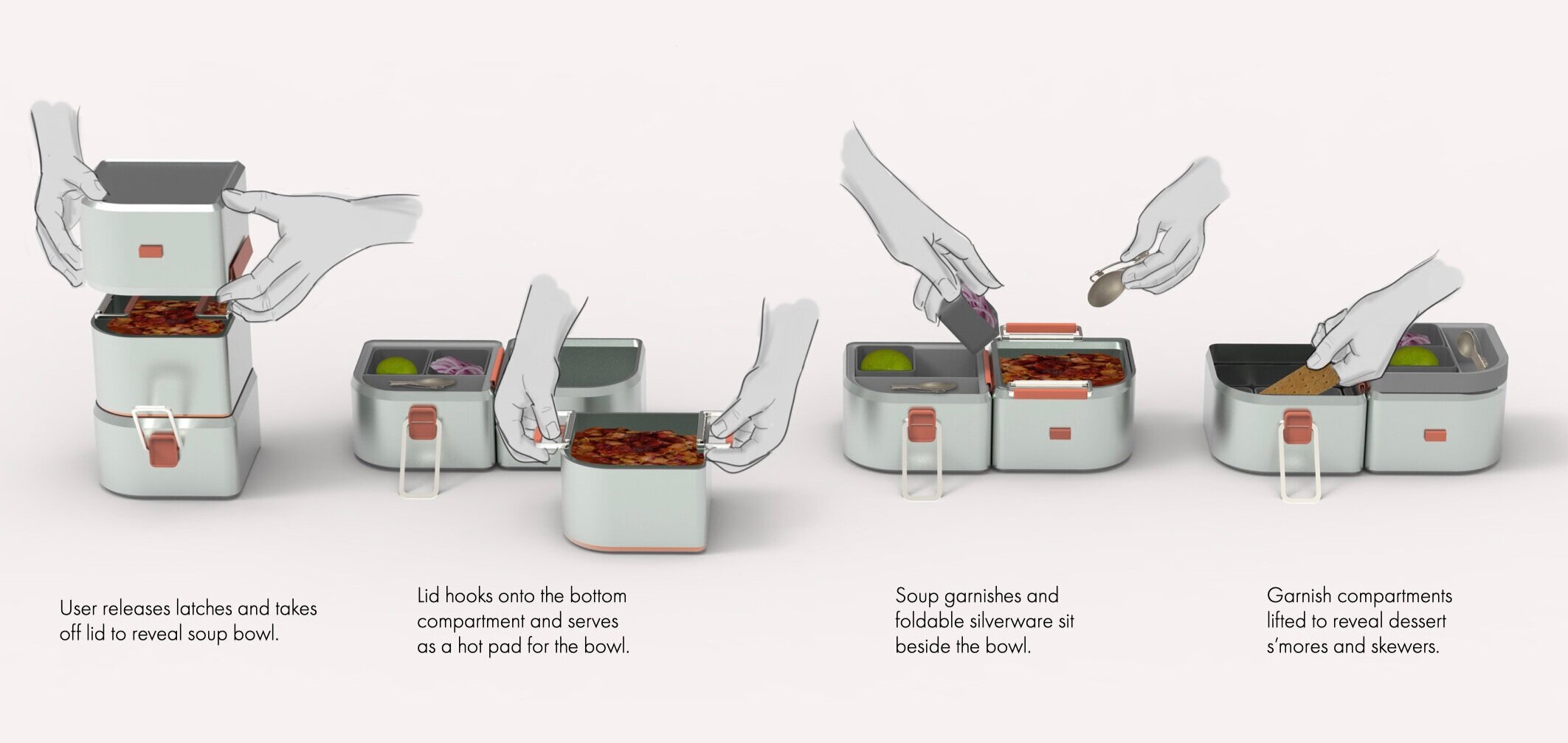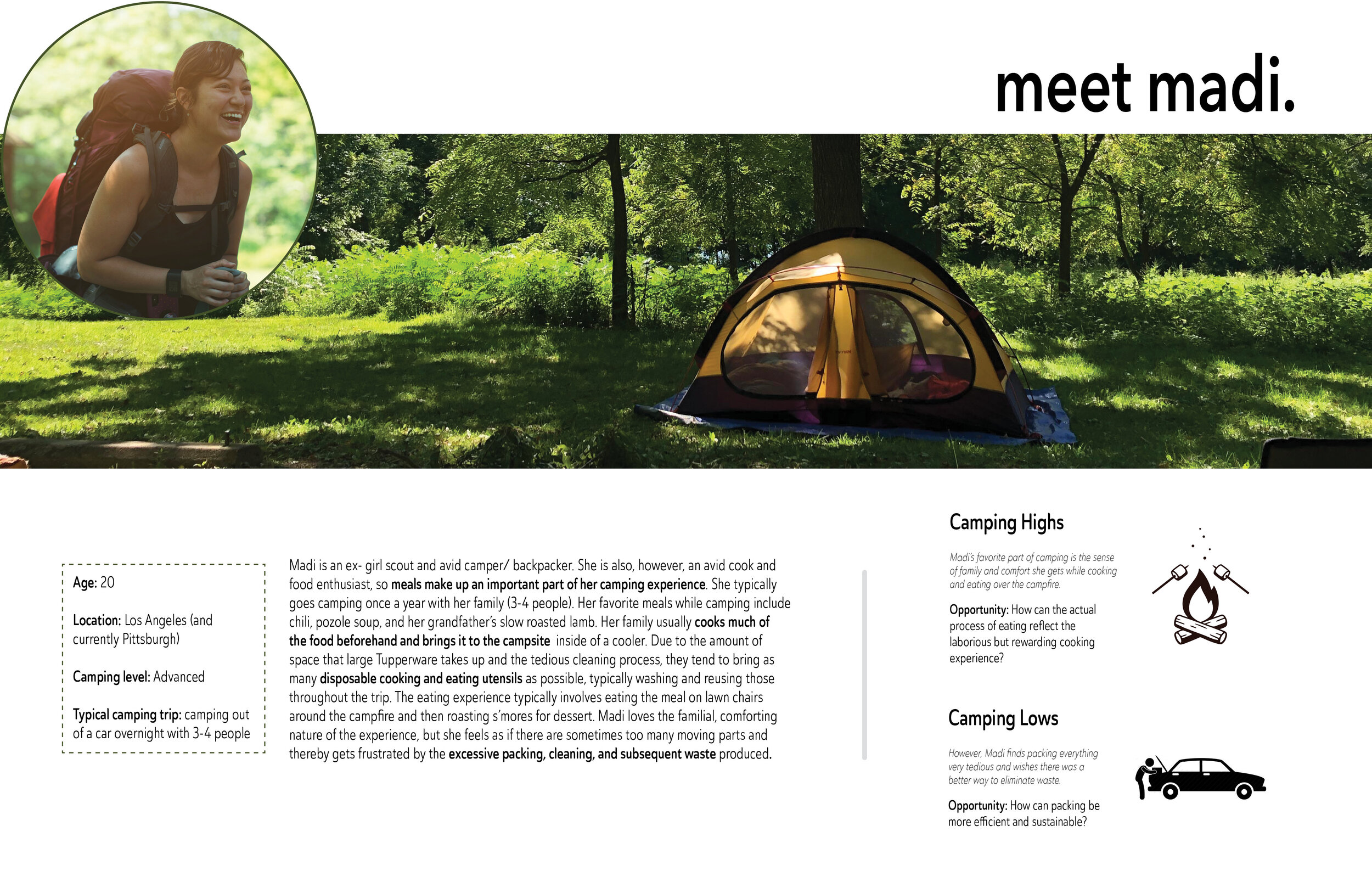A Reimagined Camping Meal Experience
Design Brief:
Propose a new product to facilitate an on-the-go meal experience and offer value based on the needs of a specific user.
Course:
Products Studio III, Fall 2020
Timeline:
7 weeks

For my chosen context -a camping meal experience- I was interested in designing a product system that could simplify the planning process prior to the trip and reduce waste, while maintaining the integrity of a meal experience around a campfire.
The final product I proposed is comprised of an entree container, a garnish and silverware compartment, and a dessert compartment, stacked securely and compactly. The lid can flip over and hook onto the food compartments to create a wide, heat-protected surface for users to be able to eat on their laps around the fire. In a way, the meal is meant to reveal itself to the user bit by bit, reflecting the laborious but rewarding experience of preparing a meal at a campsite. This product would, thus, eliminate the need to separately pack pots or pans, silverware, and garnishes, and reduce food waste created by overpacking.
Product features & interactions





User research
In order to really pinpoint the needs I wanted to address through my design, I conducted interviews with three avid campers of varying experiences, and conducted task analyses as they described the entire process of preparing and consuming a meal while camping. Based on a combination of insights from all three users, I developed the following persona to guide my decisions.
Criteria
Based on the user research, I also deducted the following criteria as posed by my persona:
Compactness: How can the product reflect all of the items necessary for a camping meal experience in a compact (and interesting) manner?
Eliminating waste: How might a container help to eliminate waste by consolidating food groups and pre-portioning?
Packing for multiple people: How might the familial experience of eating around the campfire be reflected in the product, while maintaining the individual’s experience as well?
Transporting food from fire to plate (or eating container): How is the food is transported from one state to the other and how many different containers are required?
Surface area: How might the product account for the limited surface area when eating around the campfire?
Prototyping & ideation











Below are my final high density foam form model (left) and the functional model (right) to demonstrate and test my intended interactions.





